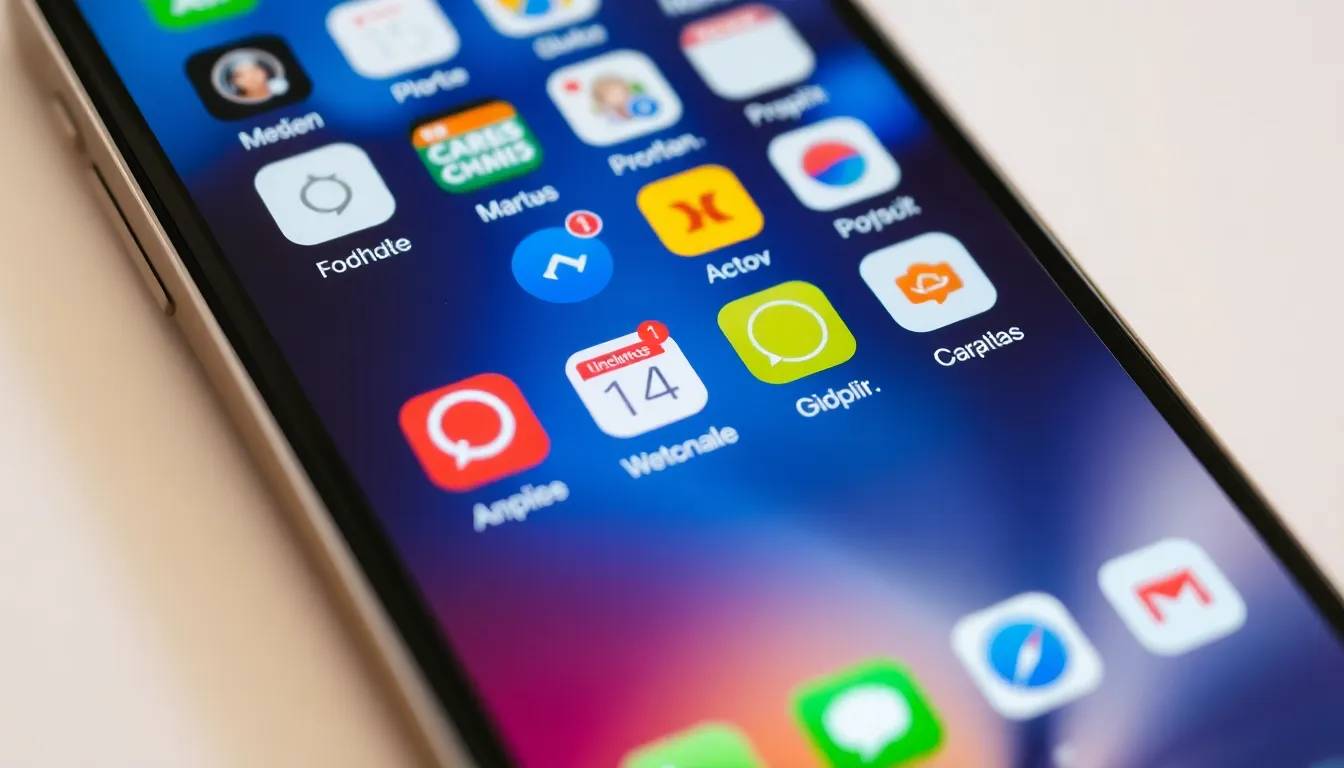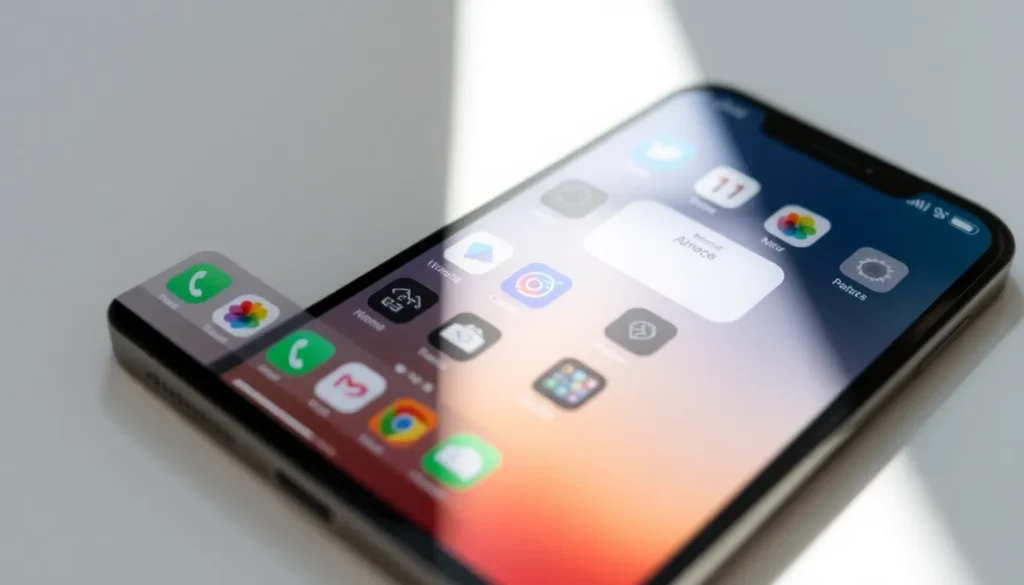Is your iPhone home screen a chaotic mess of apps that even a treasure hunter would struggle to navigate? Fear not! With a little organization magic, it can transform from a digital junkyard into a sleek, efficient workspace. Imagine swiping through your apps like a pro, effortlessly finding what you need without the frustration of endless scrolling.
Understanding iPhone Home Screen Organization
Effective organization of the iPhone home screen improves navigation and user experience. It creates a space where finding apps becomes effortless, reducing time spent searching.
Importance of Effective Organization
Effective organization streamlines access to frequently used apps. Users can prioritize essential tools by sorting them into folders or pages. This method minimizes distractions, enabling focus on tasks. An organized layout enhances productivity by ensuring that everything remains within reach. By categorizing applications into themes, users can locate them faster. Overall, an orderly home screen cultivates a more enjoyable experience.
Benefits of a Well-Structured Home Screen
A well-structured home screen fosters efficiency in everyday tasks. Users save time during app searches, leading to increased productivity. Visually appealing layouts reduce stress, which contributes to a smoother user experience. Organizing apps into specific groups offers a clear overview of available resources. A structured home screen also enables better management of notifications, ensuring important alerts remain visible. Ultimately, an orderly home screen transforms daily interactions with the device, making them more efficient and enjoyable.
Tips for Organizing Your Home Screen

Organizing the iPhone home screen simplifies navigation. Users benefit from a structured approach.
Categorizing Your Apps
Start by sorting apps based on their purpose. Social media apps form one category, while productivity tools belong in another. Entertainment apps can sit alongside gaming apps, making access to leisure activities quicker. Consider creating a category for frequently used apps, allowing easy access at a glance. Such grouping reduces the visual clutter users often encounter.
Utilizing Folders for Clutter Reduction
Folders serve as effective tools for reducing clutter. Users can create folders named after categories, enabling quick identification. For example, a folder labeled “Finance” can contain banking and budgeting apps. Dragging related apps into these folders keeps the home screen organized. Naming folders clearly enhances functionality, ensuring users find what they need swiftly, minimizing distractions during usage.
Prioritizing Essential Apps
Prioritize essential apps for maximum efficiency. Place the most frequently used applications on the first page. This strategy saves time and improves overall workflow. Consider limiting each page to nine to twelve apps, facilitating quicker access. Users benefit from placing important communication apps in a prominent position, further streamlining daily interactions. Fostering efficient usage enhances the experience significantly.
Customization Options for Your Home Screen
Customization enhances the iPhone home screen, providing a personalized experience. Users can modify app appearances and add widgets for greater functionality.
Changing App Icons
Changing app icons offers a fresh look. Users can select from various icon styles, tapping into creativity. Using apps like Color Widgets or shortcuts allows for personalized designs. To change an icon, create a new shortcut, assign the desired app, and customize the icon’s appearance. This process not only refreshes the aesthetic but also enables quick recognition of frequently used apps. Simplified navigation results from a visually cohesive theme that resonates with the user’s style.
Adding Widgets for Functionality
Adding widgets boosts functionality while providing essential information at a glance. Users can choose from options like calendar, weather, and reminders to keep important data accessible. Widgets come in various sizes, allowing for flexibility in home screen layout. Placing a widget at the top of the screen ensures easy visibility for urgent tasks. Regularly updating widgets keeps information fresh, enhancing daily productivity. Integrating useful widgets transforms the home screen into an efficient workspace.
Maintaining Your Home Screen Organization
Maintaining an organized iPhone home screen enhances navigation and user experience. Periodic adjustments ensure that users keep their workspace efficient and clutter-free.
Regular Cleaning and Updates
Regularly cleaning the home screen involves reviewing apps and removing those no longer in use. Users should check for unused apps, decluttering helps in enhancing focus. Updating apps also plays a crucial role in optimizing performance. Keeping apps up to date ensures access to the latest features and security improvements. Organizing apps based on frequency of use simplifies locating essential tools. Prioritizing frequently used apps on the main page streamlines the interaction process, making access quicker and more intuitive.
Adapting to New Apps and Features
Adapting to new apps and features is vital for maintaining an efficient home screen. Users should evaluate newly downloaded apps and decide their placement based on necessity. Each app should be categorized according to its use, such as productivity or entertainment. Integrating these new tools into existing folders or creating specific ones aids in effective organization. Customizing home screen layouts as new features become available can enhance usability. Updating app icons or rearranging widgets keeps the workspace fresh and functional, assisting in daily tasks and productivity.
A well-organized iPhone home screen can significantly improve daily interactions with the device. By implementing effective organization techniques users can minimize clutter and enhance navigation. Prioritizing essential apps and utilizing folders not only streamlines access but also fosters productivity.
Customization options like changing app icons and adding widgets further personalize the experience. Regular maintenance ensures that the home screen remains efficient and tailored to individual needs. Embracing these strategies transforms the iPhone into a powerful tool that keeps users focused and productive.













